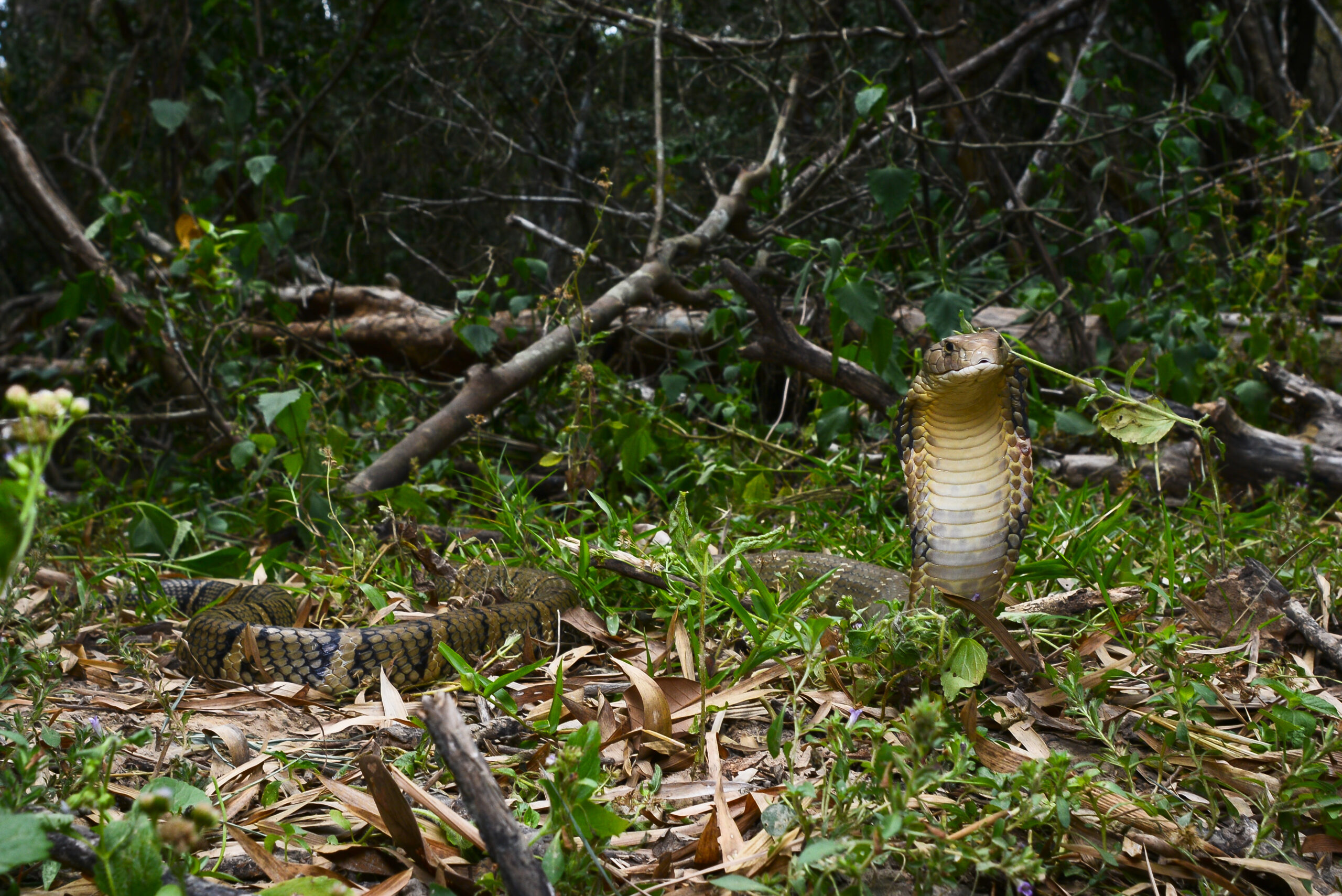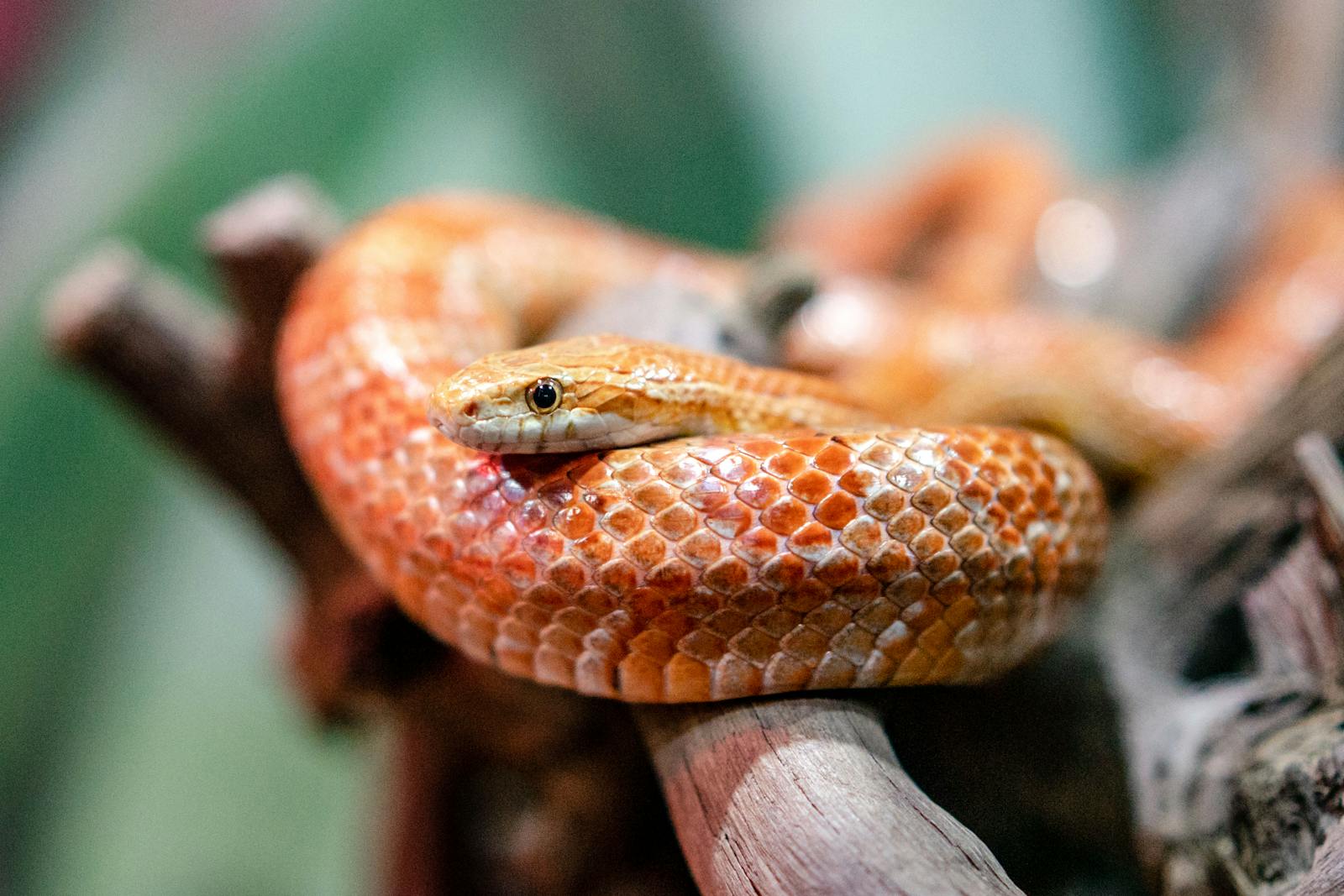The animal kingdom is filled with fascinating creatures that simultaneously inspire awe and trepidation. Among these remarkable animals, venomous snakes occupy a special place in human consciousness—often feared, yet undeniably captivating. While many people might think of cobras or vipers when imagining dangerous serpents, the title of the world’s largest venomous snake belongs to a truly impressive species that dwarfs most of its toxic relatives. The king cobra (Ophiophagus hannah) stands alone as a true giant among venomous snakes, combining impressive size with potent venom and remarkable intelligence. This majestic yet deadly reptile has fascinated scientists, conservationists, and snake enthusiasts for generations, earning both respect and concern as its populations face mounting threats across its native range in Asia.
The King Cobra: An Introduction to the Giant
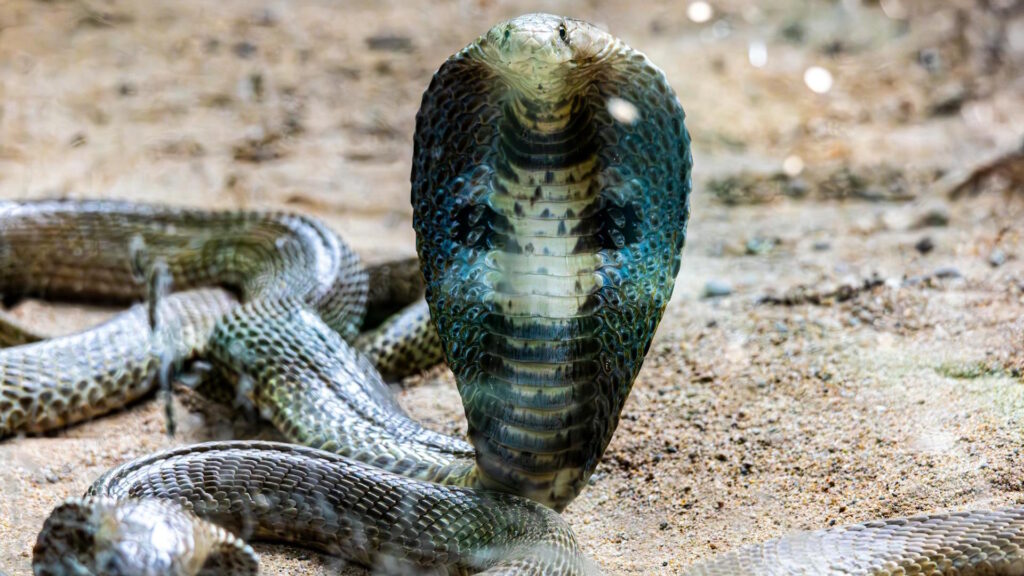
The king cobra (Ophiophagus hannah) holds the distinguished title of being the world’s largest venomous snake, capable of reaching lengths that seem almost mythical. Fully grown specimens regularly exceed 13 feet (4 meters), with exceptional individuals documented at more than 18 feet (5.5 meters) in length. Despite belonging to the family Elapidae, which includes other cobras, the king cobra is so distinct that it has its own genus, Ophiophagus, which translates to “snake-eater”—a reference to its specialized diet. Unlike many other venomous snakes that are relatively heavy-bodied, the king cobra maintains a slender, elegant profile despite its enormous length, allowing it to move with surprising speed and agility through its forest habitats. Its impressive size combined with its intelligence and defensive capabilities make it one of the most formidable predators in its ecosystem.
Geographic Distribution and Habitat
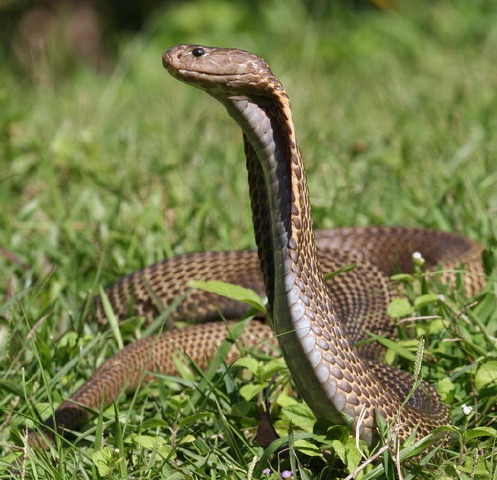
King cobras inhabit a vast range across South and Southeast Asia, from India and southern China to the Philippines and Indonesia. Within this extensive territory, they’ve adapted to various environments, though they primarily thrive in dense forests, particularly tropical and subtropical regions with abundant rainfall. These massive serpents show a notable preference for areas near water bodies, including streams, rivers, and swamps, which provide both hydration and prey opportunities. Unlike many other venomous snakes that may venture into agricultural or urban areas, king cobras generally avoid human settlements, preferring the seclusion of undisturbed forests. Their dependency on specific forest habitats makes them particularly vulnerable to deforestation and habitat fragmentation occurring throughout their range. In different parts of their distribution, subtle variations in size and coloration have been observed, suggesting possible distinct geographical populations.
Physical Characteristics Beyond Size

While the king cobra’s enormous length justifiably captures attention, its physical characteristics extend far beyond mere size. The snake’s coloration varies across its range, from olive-green to brown or even black, often with distinctive yellow or cream bands that narrow toward the tail. Young king cobras typically display more vibrant and contrasting patterns that fade somewhat as they mature. Perhaps the species’ most iconic feature is its impressive hood, which expands when the snake feels threatened, creating an intimidating display significantly larger than that of other cobra species. Behind this hood, the snake’s head is relatively large and flattened, with prominent eyes that provide excellent vision compared to many other snakes. The scales of a king cobra are smooth and glossy, arranged in 15 rows at midbody—fewer than most other snake species, contributing to its sleek appearance despite its massive proportions.
The Deadly Venom Composition

The venom of the king cobra is a sophisticated biochemical weapon primarily composed of neurotoxins that target the victim’s nervous system. Unlike vipers that rely on hemotoxins to break down tissue, the king cobra’s venom works by blocking nerve impulses, leading to respiratory failure and eventually death if left untreated. A single bite can deliver approximately 7ml of venom—enough to kill 20 humans or even an elephant. Interestingly, king cobra venom is not as potent drop-for-drop as some other elapids like the inland taipan, but what makes it exceptionally dangerous is the sheer volume delivered during a bite. Research has identified unique components in king cobra venom that may have medical applications, including pain relievers and compounds with potential therapeutic properties. The venom’s composition appears to be specifically evolved to target other reptiles, particularly snakes, which form the core of the king cobra’s natural diet.
Hunting Behavior and Diet Specialization
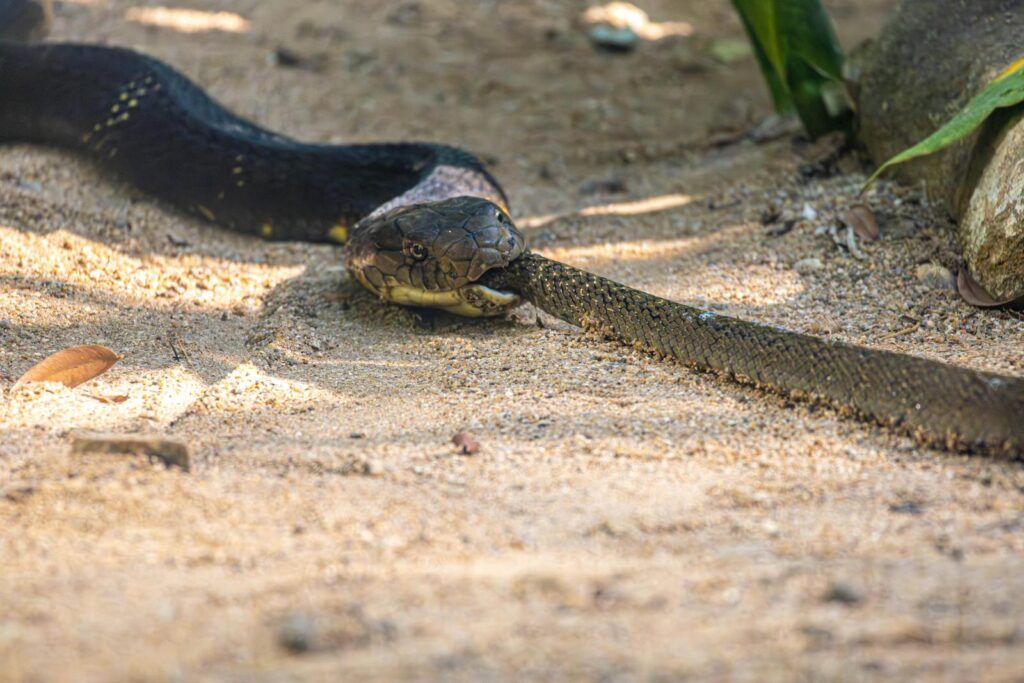
The king cobra earned its genus name “Ophiophagus” (snake-eater) for good reason, as it exhibits a remarkable dietary specialization unlike most other venomous snakes. These giants primarily hunt and consume other snakes, including venomous species that would be dangerous to most predators, demonstrating a natural immunity to various snake venoms. When hunting, king cobras use their exceptional sense of smell to track prey, moving deliberately through the forest with their heads raised above ground level. Upon locating a target, they strike with precision, injecting venom and then tracking the prey until it succumbs to the toxins. Their feeding technique is equally specialized—they always begin swallowing their prey from the head, using powerful muscles to consume snakes sometimes nearly as large as themselves. While other snakes comprise up to 80% of their diet, they will occasionally consume lizards, small mammals, and birds when their preferred prey is scarce.
Intelligence and Advanced Behaviors
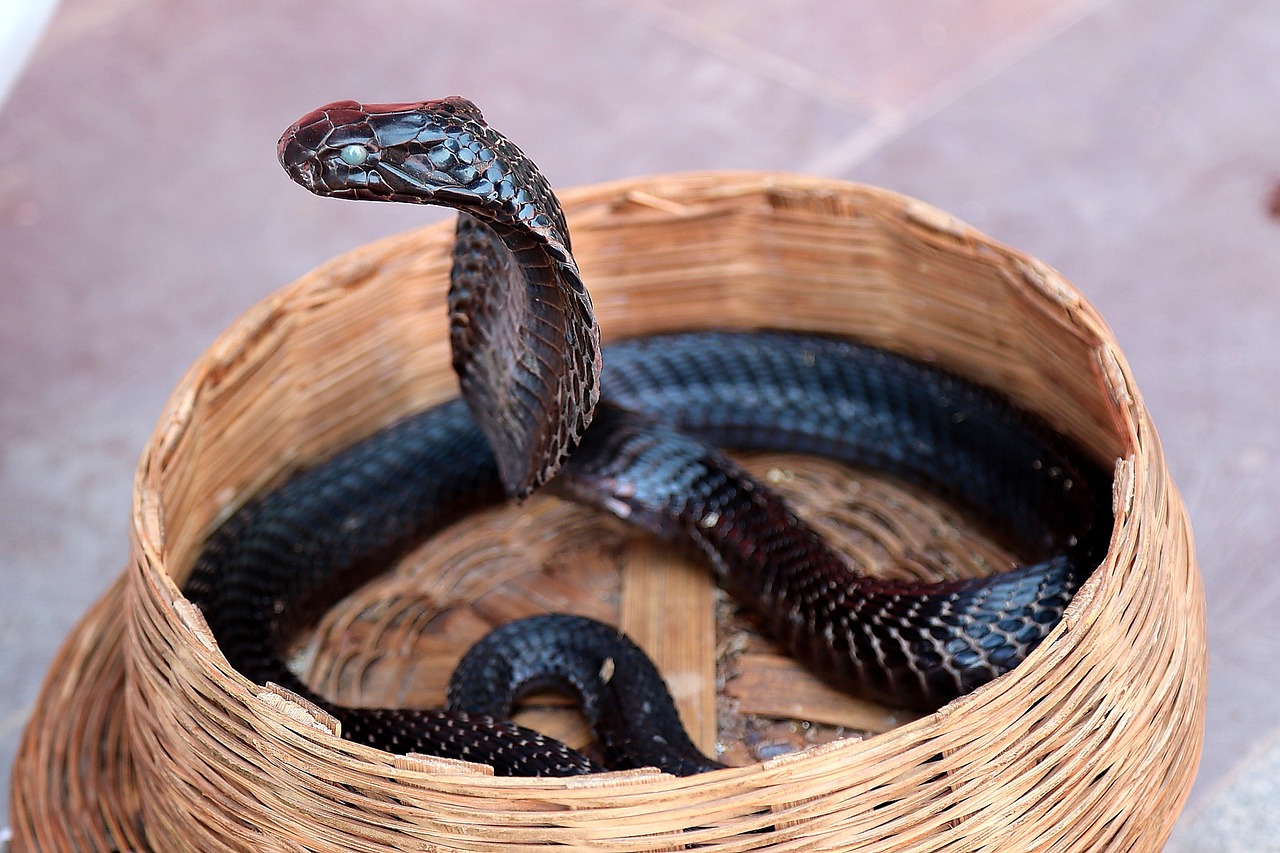
Among venomous snakes, the king cobra demonstrates cognitive abilities that set it apart from most other serpents. These snakes show remarkable problem-solving capabilities, spatial awareness, and memory that researchers believe reflect a higher level of intelligence than typically associated with reptiles. King cobras can recognize familiar territories and even individual humans they’ve encountered previously, adjusting their defensive responses accordingly. Perhaps most fascinating is their ability to gauge threats and respond proportionally—often preferring intimidation displays over actual strikes when confronting larger animals. Captive specimens have demonstrated learning abilities that surprise even experienced herpetologists, quickly adapting to routines and recognizing keepers. Their hunting strategies reflect complex decision-making, as they’ve been observed to pursue different tactics based on the species of snake they’re targeting. This combination of size, venom, and intelligence makes the king cobra a particularly sophisticated predator in its ecosystem.
Unique Reproductive Behavior
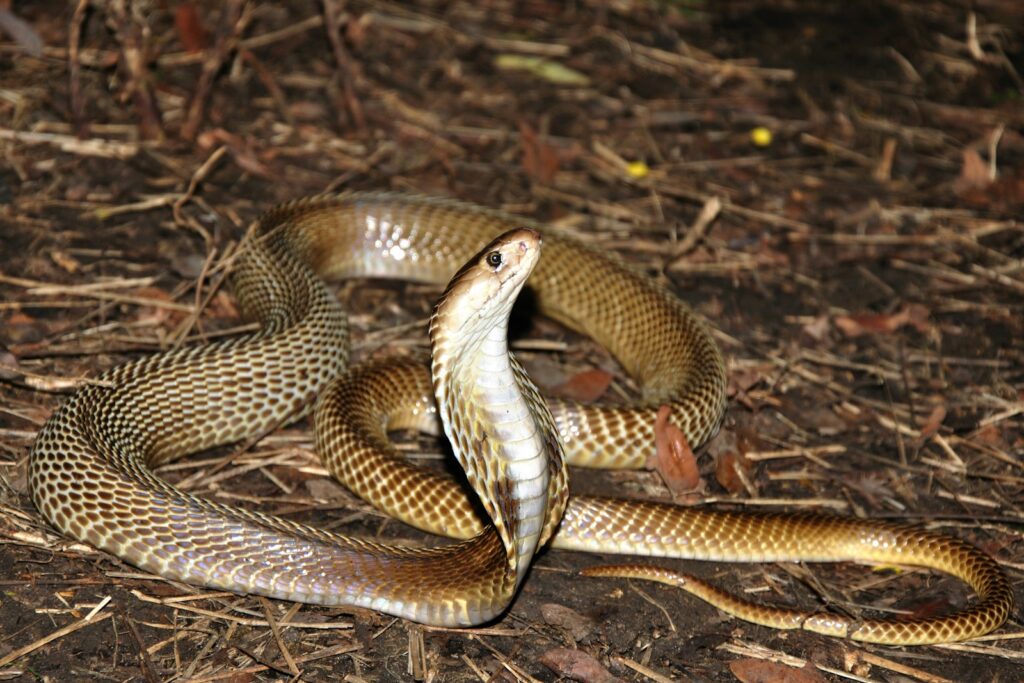
King cobras exhibit reproductive behaviors that stand out as exceptional among venomous snakes, particularly in their nesting habits. They are the only snake species known to build and guard a nest for their eggs, with females meticulously gathering leaves, twigs, and other plant materials to construct mounds that can measure up to two feet high and five feet across. The decomposition of this vegetation creates heat that helps incubate the eggs, demonstrating a sophisticated understanding of their environment. Female king cobras lay between 20-40 eggs after mating in the early part of the year, and then remain near the nest for the 60-90 day incubation period, fiercely defending their offspring from potential predators. Remarkably, once the eggs hatch, the mother abandons the nest, as the hatchlings—already venomous and approximately 18-22 inches long—are fully equipped to fend for themselves. This combination of nest-building and maternal guarding behavior is unique among snakes and represents a fascinating evolutionary adaptation.
Defensive Behavior and Human Interactions
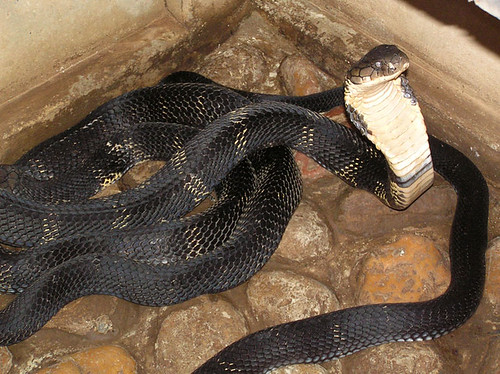
Despite their fearsome reputation, king cobras typically avoid human confrontation whenever possible, preferring escape to engagement. When threatened and unable to retreat, they exhibit a series of escalating defensive behaviors that begin with raising the front portion of their body, expanding their impressive hood, and producing a distinctive hiss that sounds almost like a growling dog. This dramatic display serves as a clear warning, and the snake may maintain this posture while slowly backing away if given the opportunity. If further provoked, king cobras can perform precise defensive strikes, often delivering “dry bites” without venom as a final warning before resorting to envenomation. Their ability to strike from a raised position means they can deliver venom to a human’s chest or face rather than just the lower extremities, making encounters particularly dangerous. In agricultural areas where humans have encroached on their habitat, king cobras sometimes enter villages or plantations, creating potential for dangerous interactions.
Conservation Status and Threats
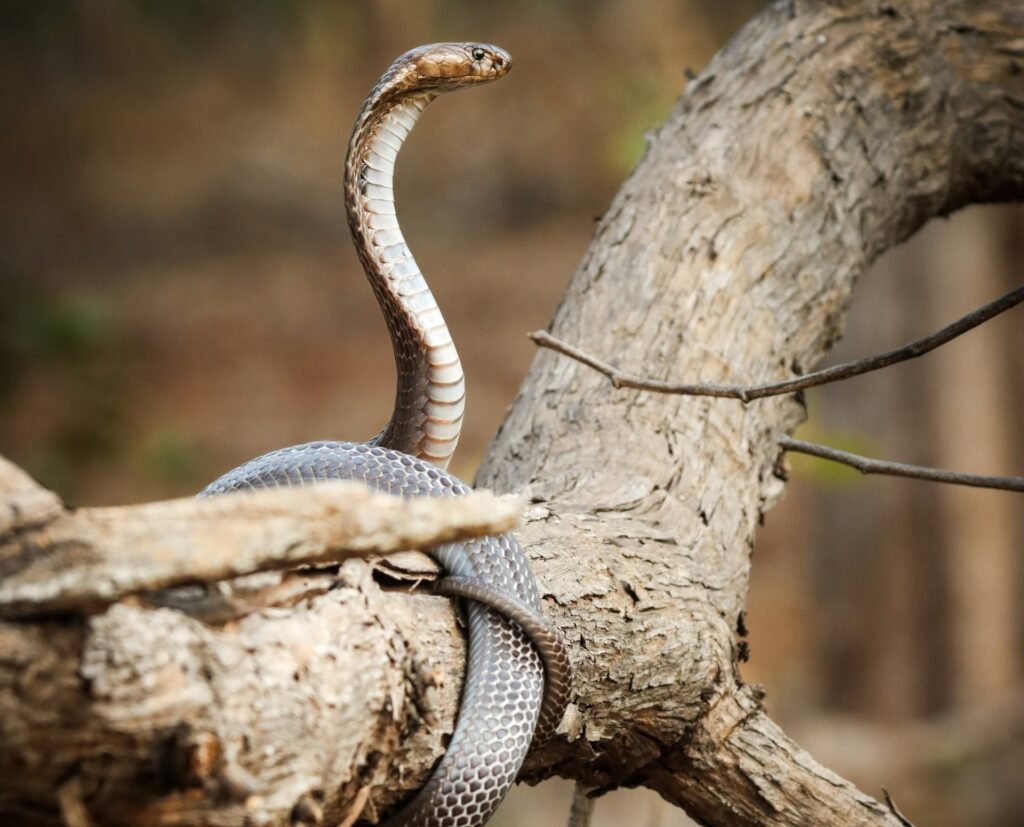
The king cobra is currently classified as “Vulnerable” on the IUCN Red List, with population trends showing concerning declines across much of its range. Habitat loss represents the most significant threat, as deforestation for agriculture, logging, and development continues to fragment and destroy the dense forests these snakes require. The illegal wildlife trade creates additional pressure, with king cobras captured for traditional medicine, the exotic pet trade, and for production of snake wine and other products. In some regions, they face persecution from humans who kill them out of fear, despite the species’ general tendency to avoid human contact. Climate change presents an emerging threat, potentially altering the tropical ecosystems upon which they depend. Their specialized diet of other snakes makes them particularly vulnerable to ecosystem disruptions, as declines in prey species directly impact king cobra populations.
Cultural Significance Across Asia
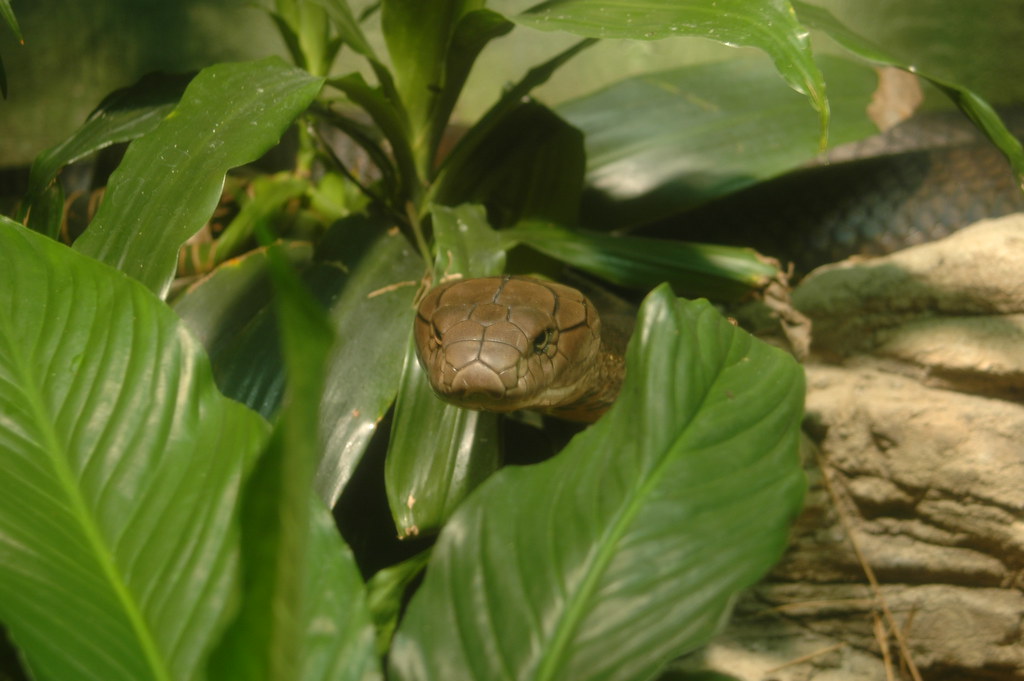
Throughout their range, king cobras hold profound cultural significance that often reflects a complex mixture of fear and reverence. In Hindu mythology, the divine cobra Shesha serves as Lord Vishnu’s seat and bed, while Lord Shiva wears cobras as ornaments, symbolizing the power of kundalini energy. Buddhist traditions in Thailand and Cambodia similarly incorporate cobra imagery in religious architecture and storytelling. In several cultures across Southeast Asia, king cobras are considered guardians of treasure or sacred sites, featuring prominently in local folklore. The annual King Cobra Festival in India’s Karnataka state demonstrates how communities have developed cultural practices that promote coexistence rather than conflict with these imposing reptiles. Traditional medical systems throughout Asia attribute various healing properties to king cobra parts, contributing unfortunately to their decline through harvesting. This cultural importance creates both challenges and opportunities for conservation efforts, as traditional reverence can be channeled toward protection rather than exploitation.
Scientific Research and Medical Applications
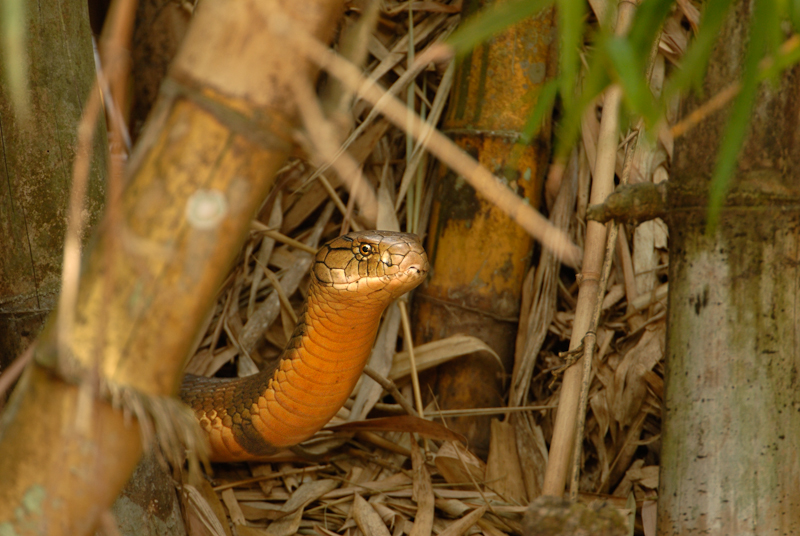
The king cobra has become an important subject for scientific research across multiple disciplines, from evolutionary biology to pharmacology. Venom researchers have identified numerous compounds in king cobra venom with potential medical applications, including pain relievers more powerful than morphine without the same side effects or addiction potential. Hannalgesin, a protein isolated from their venom, shows promise as an analgesic that acts through novel pathways different from existing medications. Behavioral researchers study king cobras to better understand reptilian intelligence and the evolution of complex behaviors like nest-building and maternal care. The species’ remarkable immune capabilities, particularly their resistance to the venom of other snakes, represents another frontier of research with potential applications in developing antivenoms and other medical treatments. Genomic studies of king cobras have provided insights into the evolution of venom production and specialized diet adaptations, contributing to our broader understanding of evolutionary processes.
Conservation Efforts and Protected Areas
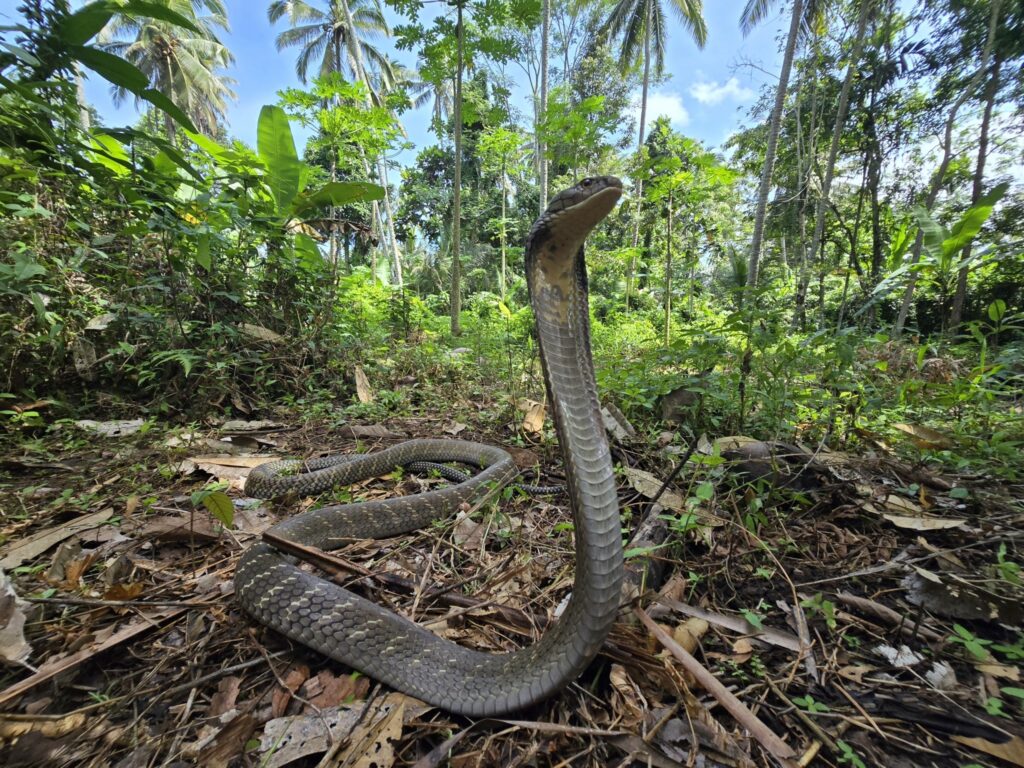
As awareness of the king cobra’s vulnerable status grows, conservation initiatives have emerged across their range to protect these magnificent serpents. Organizations like the King Cobra Conservancy work with local communities to reduce human-snake conflict through education and implementation of safe removal and relocation protocols when the snakes enter populated areas. Protected areas such as Thailand’s Khao Yai National Park and India’s Western Ghats conservation zones provide crucial habitat where king cobra populations can maintain viable numbers with minimal human interference. Captive breeding programs in several Asian countries serve as insurance populations while allowing researchers to study the species’ biology in controlled settings. Community-based conservation approaches have proven particularly effective, especially when they incorporate traditional cultural respect for the species while addressing safety concerns of local residents. In some regions, former snake hunters have become conservation advocates and guides, using their intimate knowledge of king cobra behavior to protect rather than exploit the species.
Comparing the King Cobra to Other Venomous Giants
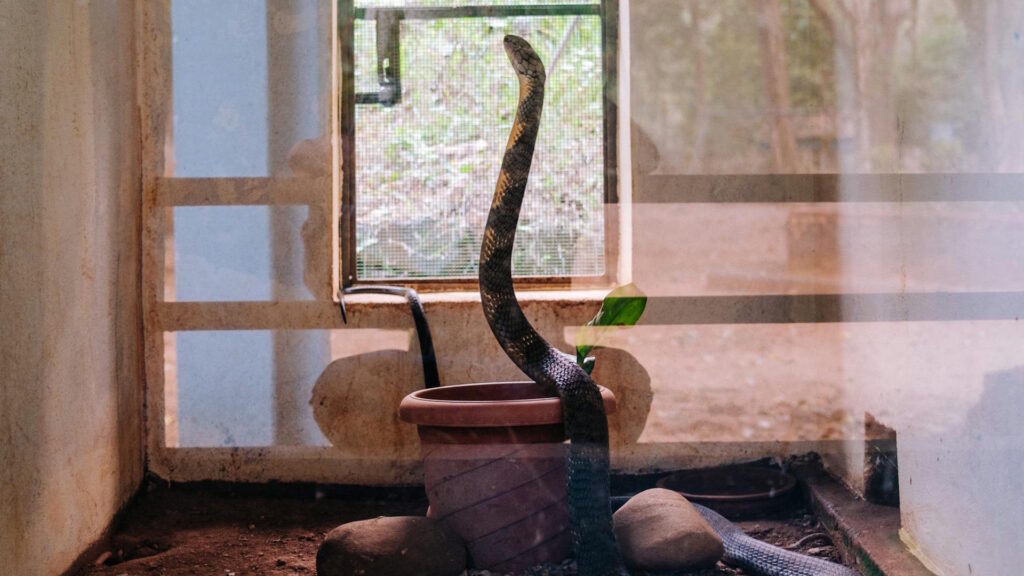
While the king cobra reigns supreme in terms of length among venomous snakes, several other species present interesting comparisons in size, venom potency, and behavior. The black mamba of Africa, reaching lengths up to 14 feet, is considerably faster and more aggressive, though not as long as the king cobra. Australia’s coastal taipan and inland taipan possess more potent venom drop-for-drop, but at maximum lengths of about 10 feet, they’re substantially smaller than the king cobra. The bushmaster (Lachesis muta) of Central and South America is the longest pit viper, approaching 12 feet in exceptional specimens, though its heavy build contrasts with the king cobra’s more slender profile. Among true cobras of the genus Naja, the forest cobra (Naja melanoleuca) comes closest in size to the king cobra, occasionally exceeding 10 feet, but still falls well short of the king’s impressive dimensions. What distinguishes the king cobra beyond mere size is the combination of length, intelligence, specialized diet, and unique reproductive behaviors not seen in these other formidable serpents.
The Future of the World’s Largest Venomous Snake
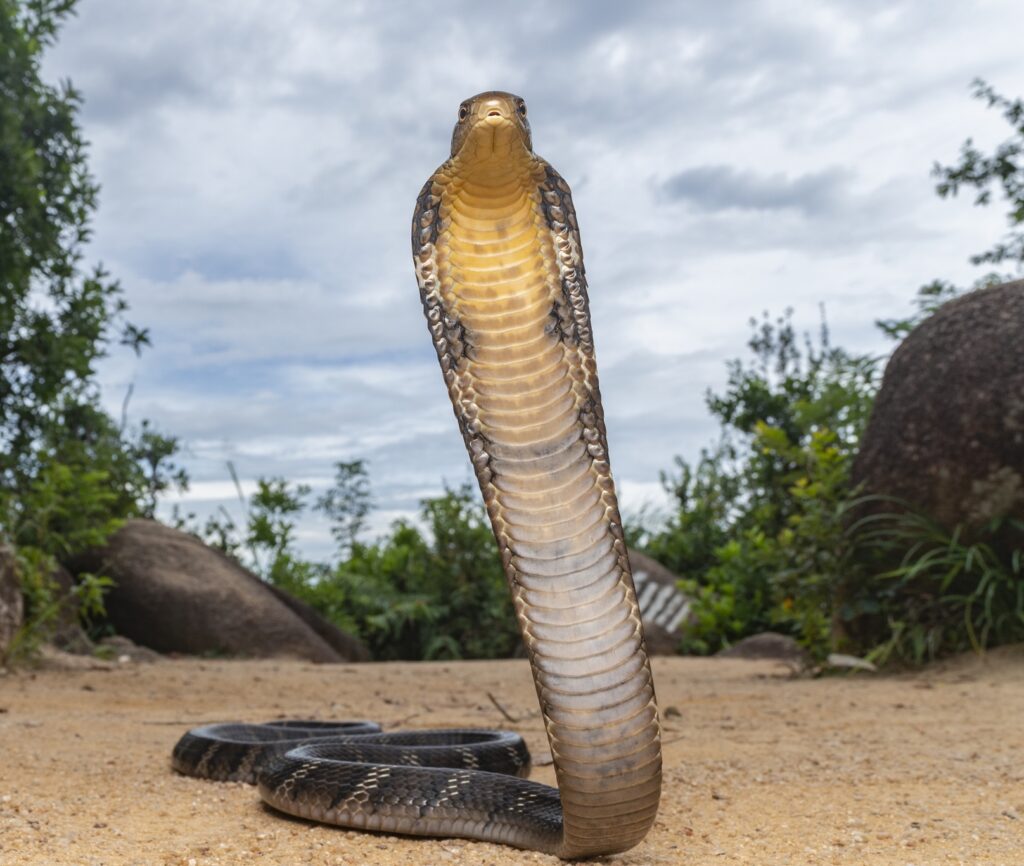
The long-term survival of the king cobra faces significant challenges that will require coordinated conservation approaches across international boundaries. Climate change models predict shifts in the tropical forest ecosystems where these snakes thrive, potentially reducing suitable habitat or altering prey availability in coming decades. Emerging technologies offer some hope, with environmental DNA sampling allowing researchers to monitor populations less invasively, and sophisticated tracking methods providing new insights into range requirements and movement patterns. The species’ future may depend largely on the success of educational initiatives that transform fear-based persecution into informed coexistence between humans and these remarkable predators. Conservation corridors connecting protected areas across international boundaries represent another critical strategy, allowing genetic exchange between otherwise isolated populations. The king cobra’s adaptability offers some reason for optimism—if sufficient habitat can be preserved and direct persecution reduced, these impressive serpents have demonstrated resilience that may help them navigate an uncertain future.
The king cobra stands as one of nature’s most remarkable achievements—a perfect synthesis of size, power, precision, and surprising complexity. As the largest venomous snake on Earth, it commands respect not merely for its deadly capabilities, but for its sophisticated behaviors and ecological importance. The challenges facing king cobra conservation mirror broader environmental concerns across Asia, where rapid development continues to transform landscapes that have supported these magnificent creatures for millennia. Yet in the growing appreciation for their unique place in both ecosystems and cultural heritage, there lies hope that human and serpent can find ways to coexist. The future of the king cobra—this true giant among venomous snakes—will ultimately serve as one measure of our ability to balance progress with preservation, fear with understanding, and development with stewardship of the natural world.

